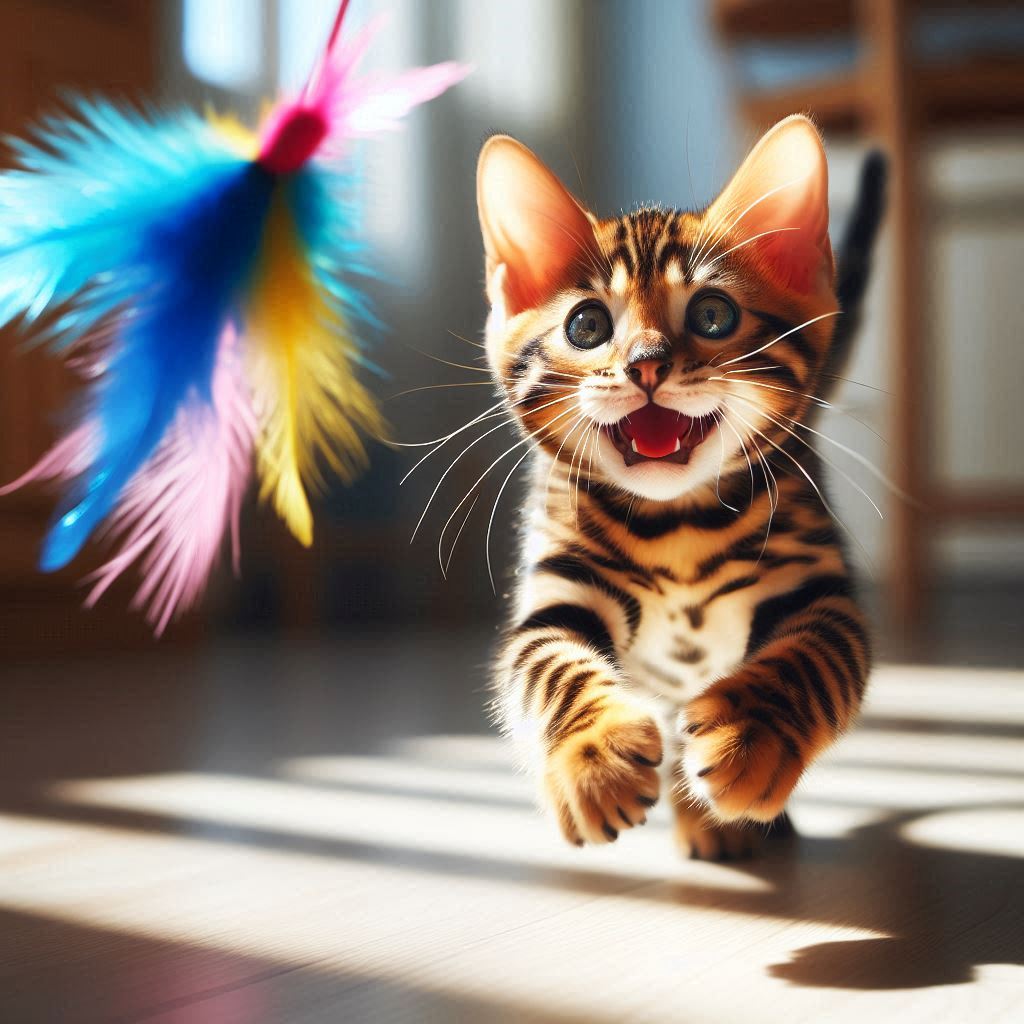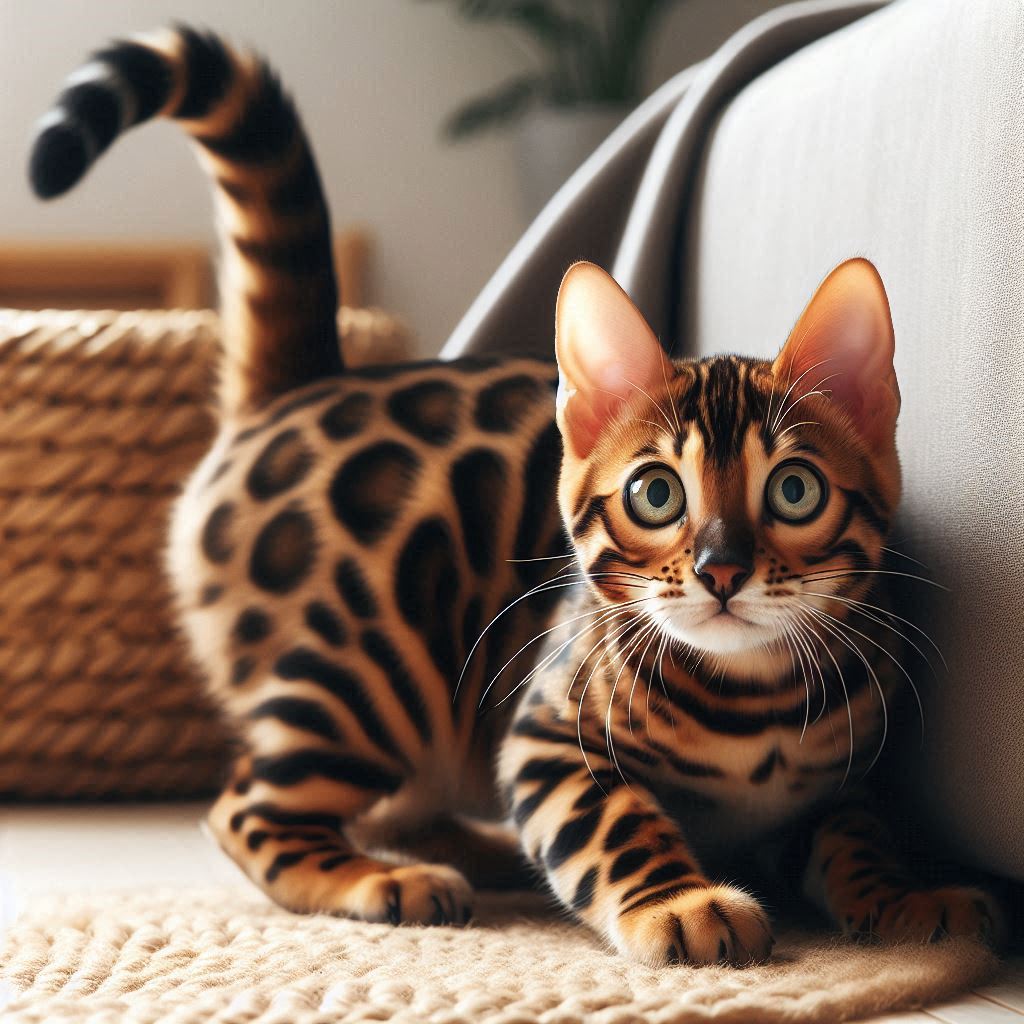The Bengal cat is one of the most striking and exotic-looking domestic cat breeds, known for its stunning wild appearance and playful, energetic nature. Often described as a miniature leopard due to its distinctive spotted or marbled coat, the Bengal cat combines the beauty of a wild feline with the temperament of a domesticated pet. Bengal cats are highly active, intelligent, and social, making them a fascinating companion for cat lovers.
Origins and History of the Bengal Cat
The Bengal cat is a relatively modern breed, first developed in the United States in the 1960s. The breed originated from a cross between a domestic cat and an Asian leopard cat (a small wild cat native to Asia). Breeders wanted to capture the wild beauty of the leopard while maintaining the domesticated temperament of a house cat. The Bengal cat was officially recognized as a breed by The International Cat Association (TICA) in 1983.
Today, Bengal cats are bred exclusively from other Bengals, but they retain their wild ancestry in both appearance and behavior. The goal of the breed is to mimic the look of a wildcat, while ensuring they are completely domestic in temperament.
Physical Characteristics of the Bengal Cat
One of the main reasons people are drawn to Bengal cats is their unique and stunning appearance. Some of their distinctive physical traits include:
- Coat: Bengal cats have a short, sleek coat that is incredibly soft to the touch. Their fur is covered in bold spots, rosettes, or marbled patterns that resemble a wild leopard or ocelot. Bengal coats come in a variety of colors, including brown, silver, snow, and charcoal.
- Body Type: Bengals are muscular and athletic, with a medium to large build. They are powerful cats with long, sleek bodies that are built for agility and speed.
- Eyes: Bengal cats have large, expressive eyes that are often gold or green, though some can have blue eyes, especially those with the snow coat pattern.
- Tail: Their tail is thick and tapers to a rounded tip, often featuring rings of darker color along its length.
- Ears: Bengal cats have small to medium-sized ears that are rounded and set toward the side of their head, giving them a slightly wild look.
Personality and Temperament
Bengal cats are known for their energetic and playful nature. They are not the type of cats to lounge around all day—they thrive on activity and mental stimulation. Here are some key traits of the Bengal cat’s personality:
Highly Active:
Bengals are incredibly energetic and require plenty of physical activity. They enjoy climbing, running, and jumping, making cat trees and climbing structures essential in a Bengal-friendly home.
Intelligent:
Bengals are one of the most intelligent cat breeds. They can learn tricks, solve puzzles, and are known to be quite curious. Some Bengals even enjoy playing in water, a trait not often seen in cats.
Affectionate:
Despite their wild appearance, Bengal cats are affectionate and love attention from their owners. They form strong bonds with their families and are known to follow their humans around the house.
Social :
Bengals are social cats that enjoy interacting with people and other animals. They are not typically shy or aloof, making them great pets for households that can provide companionship and attention.
Vocal:
Bengals are quite vocal and are not afraid to communicate with their owners. They may chirp, trill, or meow when they want attention or are excited about something.

Caring for a Bengal Cat
Grooming
Bengal cats have short coats that require minimal grooming. Their sleek fur is low-shedding, so a weekly brushing is usually sufficient to keep their coat in good condition. Brushing also helps to reduce shedding and keeps their coat shiny and healthy.
Diet and Nutrition
Bengals are highly active cats, so they need a diet that supports their energy levels. A high-protein, balanced diet is essential for maintaining their health and strength. It’s important to feed them high-quality cat food, whether wet or dry, and ensure they have access to fresh water at all times.
Exercise and Mental Stimulation
Bengal cats are highly energetic and need regular exercise to stay healthy and happy. Providing them with toys, puzzle feeders, and climbing structures will help keep them mentally and physically stimulated. Bengal cats also enjoy interactive play, so spending time playing with them is crucial to their well-being.
Health and Lifespan
Bengal cats are generally healthy, but like all breeds, they can be prone to certain health issues. Some health problems that Bengals may face include:
- Hypertrophic Cardiomyopathy (HCM): A heart condition that is common in many cat breeds, including Bengals.
- Progressive Retinal Atrophy (PRA): A genetic condition that can lead to vision loss.
- Luxating Patella: A condition that affects the kneecap, which can cause discomfort and mobility issues.
Regular veterinary check-ups and responsible breeding practices can help minimize the risk of these health issues. With proper care, Bengal cats typically live 12 to 16 years.
Why Choose a Bengal Cat?
Bengal cats are perfect for people who are looking for an active, playful, and social pet. Their wild appearance is sure to turn heads, but it’s their affectionate and loyal nature that makes them such wonderful companions. Bengals thrive in homes where they can receive plenty of attention, exercise, and mental stimulation. However, they may not be the best choice for someone looking for a low-energy or independent cat.
Conclusion
The Bengal cat is a breed that combines the best of both worlds: the wild beauty of a leopard with the loving and playful nature of a domestic cat. If you’re looking for a striking, intelligent, and energetic pet, the Bengal cat may be the perfect fit for you. Their active lifestyle and engaging personality make them ideal for families or individuals who have the time and space to provide them with the attention and stimulation they need. Owning a Bengal cat is a rewarding experience, full of love, laughter, and admiration for their beauty and charm.



